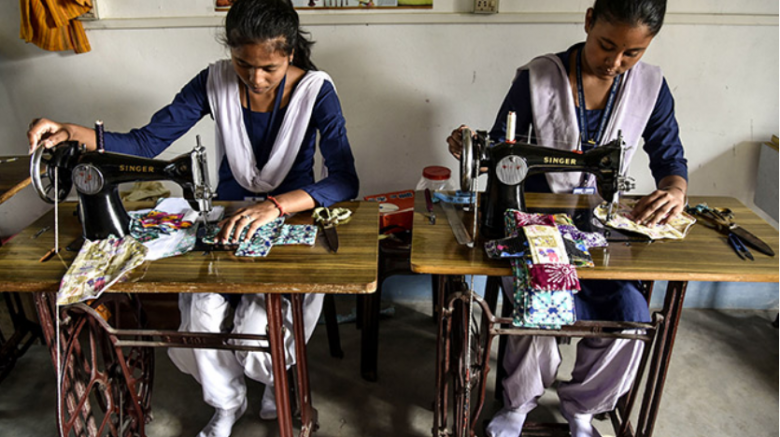Bihar’s Nawada district usually makes the headlines for Naxal violence. Recently, a 19-year-old woman from the district has been feted for finding a solution to a crisis that had been brewing since the start of the lockdown in March — access to sanitary pads in rural India. Mausam Kumari started a sanitary pad bank four years ago, based on the idea of microfinance savings, with a voluntary contribution of Re 1 from young girls and women. During the lockdown, she was able to distribute free sanitary pads in villages across the district. In May this year, a study conducted in Bihar, Uttar Pradesh and Rajasthan by the NGO, Population Foundation of India (PFI), found that more than half of the women surveyed had no access to sanitary pads during the lockdown.
In his speech on Independence Day this year, Prime Minister Narendra Modi said, “This government has been persistently concerned about better healthcare for poor sisters and daughters. We have done a huge job in providing sanitary pads at one rupee each in Janaushadhi Kendra. In a short span of time, more than 5 crore sanitary pads have been delivered to these poor women from 6,000 Janaushadhi Kendras”. He is the first prime minister to address menstrual health as a public health issue. Could this lead to a renewed focus on an aspect of public health that has long been neglected and stigmatised?
PM Narendra Modi is the first prime minister to address menstrual health as a public health issue. Could this lead to a renewed focus on an aspect of public health that has long been neglected and stigmatised?
Just weeks after Modi’s announcement, it was reported that the government was planning to spend Rs. 12,000 crore to ensure universal access to sanitary pads and to involve corporate houses in the initiative through their CSR (corporate social responsibility) activities. Under the Suvidha brand, the government is selling biodegradable and affordable sanitary pads to women. Suvidha pads are sold at Janaushadhi Kendras stores that provide quality medicines at affordable prices. In 2019, the price of the biodegradable pads was further subsidised to Re 1 from Rs. 2.50 per piece. Though the scheme is well-intentioned, its reach has been limited by gaps in distribution, irregular supply and lack of awareness—many don’t know about it at all, as this news report suggested.
In the last decade, policymaking in India has increasingly focused on menstrual health. The Menstrual Hygiene Scheme was launched in 2011 under the National Health Mission for the promotion of menstrual hygiene amongst 15 million adolescent girls in the age group of 10 to 19 in 152 districts across 20 states. The Rashtriya Kishor Swasthya Karyakram (RKSK) was launched in 2014 to increase awareness of and access to sanitary pads among adolescent girls in rural areas.
Apart from central government schemes, state governments distribute sanitary pads in schools in Uttar Pradesh, Rajasthan, Maharashtra, Odisha, Chhattisgarh, Andhra Pradesh and Kerala. States that do not distribute pads in schools have other provisions, like Bihar, which gives 300 rupees under the Kishori Swasthya Yojana to adolescent girls to buy sanitary pads. These programs, though effective and necessary to encourage girls to not drop out of school because of menstruation, leave out those girls who are not in school.
Experts fear that the pandemic—which affected commercial supply chains in the early months—along with the continued closure of schools—where most adolescent girls access sanitary pads—have impacted the gains made in menstrual health, as more girls and women were left with no choice and had to resort to using cloth.
Experts fear that the pandemic—which affected commercial supply chains in the early months—along with the continued closure of schools—where most adolescent girls access sanitary pads—have impacted the gains made in menstrual health
Across the country, outreach services through VHND (Village Health and Sanitation Day), which are organised once a month in villages, have been disrupted by the pandemic. For many young girls and women in the country, VHNDs play a crucial role in providing menstrual health counselling and access, as well as information on the use and safe disposal of sanitary pads. While NGOs stepped in to plug the gap and public health services are resuming, it is a slow limping back to normal.

